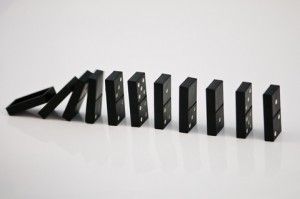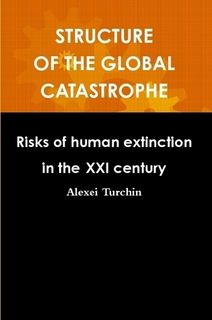- submitted to the District Attorney of Tubingen, to the Administrative Court of Cologne, to the Federal Constitutional Court (BVerfG) of Germany, to the International Court for Crimes Against Humanity, and to the Security Council of the United Nations -
by Otto E. Rössler, Institute for Physical and Theoretical Chemistry, University of Tubingen, Auf der Morgenstelle A, 72076 Tubingen, Germany
The results of my group represent fundamental research in the fields of general relativity, quantum mechanics and chaos theory. Several independent findings obtained in these disciplines do jointly point to a danger — almost as if Nature had posed a trap for humankind if not watching out.
MAIN RESULT. It concerns BLACK HOLES and consists of 10 sub-results
Black holes are different than previously thought and still presupposed by experimentalists. It is much as it was with the case with the Eniwetak hydrogen bomb test where incorrect physical calculations caused a catastrophe — fortunately a localized one at the time. Four Tubingen theorems (gothic-R theorem, TeLeMaCh theorem, miniquasar theorem, superfluidity theorem) entail 10 new consequences:
1) Black holes DO NOT EVAPORATE — hence they can only grow.
2) Artificial black holes generated at the LHC thus are undetectable at first.
3) Black holes are uncharged, so the faster majority pass right through the earth’s and the sun’s matter.
4) Only the slowest artificial ones — below 11 km/sec — will stay inside earth.
5) Inside matter, a resident black hole will not grow linerally but rather — via self-organization — form a so-called “miniquasar”: an electro-gravitational engine that grows exponentially, hence shrinking the earth to 2 cm in a few years time.
6) Since black holes are uncharged, charged elementary particles conversely can no longer be maximally small (“point-shaped”). Hence space is “bored open” in the small as predicted by the string and loop theories.
7) Therefore, the probability of black holes being generated by the LHC experiment is heavily boosted up to about 10 percent at the energy of 7 and (planned soon) 8 TeV.
8) This high probability was apparently not yet reached in 2010, since the originally planned cumulative luminosity was not achieved. But the higher-energetic second phase of proton collisions, scheduled to start in February 2011, is bound to reach that level.
9) Black holes produced in natural particle collisions (cosmic ray protons colliding with surface protons of celestial bodies including earth) are much too fast to get stuck inside matter and hence are innocuous.
10) The only exception is ultra-dense neutron stars. However, their super-fluid “core” is frictionless by virtue of quantum mechanics. Ultra-fast mini black holes that get stuck in the “crust” can grow there only to a limited weight before sinking into the core — where they stop growing. Hence the empirical persistence of neutron stars is NOT a safety guarantee as CERN claims.
MAIN QUESTION: Why do the CERN representatives disregard the above results? (Ten possible reasons)
1, The novelty of those results.
2, The limited dissemination of the above results. So far, only three pertinent papers have appeared in print, two in conference proceedings in July 2008 and one in an online science journal in 2010. CERN never quoted these results sent to it first as preprints, in its “safety reports” (never updated for two and a half years). The more recent relevant results are still confined to the Internet.
3, The a priori improbability that several results stemming from independent areas of science would “conspire” to form a threat rather than cancel out in this respect. There seems to be no historical precedent for this.
4, The decades-long intervals between new results in general relativity make sure that new findings meet with maximum skepticism at first.
5, One finding — the unchargedness result (Ch in TeLeMaCh) — dethrones a two centuries old physical law, that of charge conservation.
6, The fact that the large planetary community of string theorists suddenly hold an “almost too good” result in their hands paradoxically causes them to keep a low profile rather than triumph.
7, The waned spirit of progress in fundamental physics after its results too often proved to be “Greek gifts.”
8, The LHC experiment is the largest and most tightly knit collective scientific effort of history.
9, A fear to lose sponsors and political support for subsequent mega-projects if admitting a potential safety gap.
10, The world-wide adoption of high-school type undergraduate curricula in place of the previous self-responsible style of studying, which has the side effect that collective authority acquires an undue weight.
SOCIETY’S FAILURE
Why has the “scientific safety conference,” publicly demanded on April 18, 2008, not been taken up by any grouping on the planet? Nothing but FALSIFICATION of the presented scientific results was and is being asked. Falsification of a single one will wipe out the danger. A week of discussing might suffice to reach a consensus.
Neither politics nor the media have realized up until now that not a single visible scientist on the planet assumes responsibility for the alleged falsity of the results presented. in particular, no individual stands up to defend his disproved counterclaims (the number of specialists who entered the ring in the first place can be counted on one hand). This simple fact — not a single open adversary — escaped the attention of a media person or politician up until now.
Neither group dares confront a worldwide interest lobby even though it is not money for once that is at stake but only borrowed authority. Almost so as if the grand old men of science of the 20th century had left no successors nor had the gifted philosophers and writers (I exempt Paul Virilio). Bringing oneself up-to-date on a given topic paradoxically seems impaired in the age of the Internet.
Thus there are no culprits? None except for myself who wrongly thought that painful words (like “risk of planetocaust”) could have a wake-up effect at the last moment. The real reason for the delayed global awakening to the danger may lie with this communication error made by someone who knows how it is to lose a child. In the second place, my personal friends Lorenz, von Weizsacker, Wheeler and DeWitt are no longer among us.
CONCLUSIONS
I therefore appeal to the above called-upon high legal and political bodies to rapidly rule that the long overdue scientific safety conference take place before the LHC experiment is allowed to resume in mid-February 2011. Or in the case of a delay of the conference beyond that date, to prohibit resumption of the experiment before the
conference has taken place.
I reckon with the fact that I will make a terrible fool of myself if at long last a scientist succeeds in falsifying a single one of the above 10 scientific findings (or 4 theorems). This is my risk and my hope at the same time. I ask the world’s forgiveness for my insisting that my possibly deficient state of knowledge be set straight before the largest experiment of history can continue.
However, the youngest ship’s boy in the crow’s nest who believes he recognizes something on the horizon has the acknowledged duty to insist on his getting a hearing. I humbly ask the high bodies mentioned not to hold this fact against me and to rule in accordance with my proposition: First clarification, then continuation. Otherwise, it would be madness even if in retrospect it proved innocuous. Would it not?
Sincerely yours,
Otto E. Rössler, Chaos Researcher
2011/01/14
(For J.O.R.)


